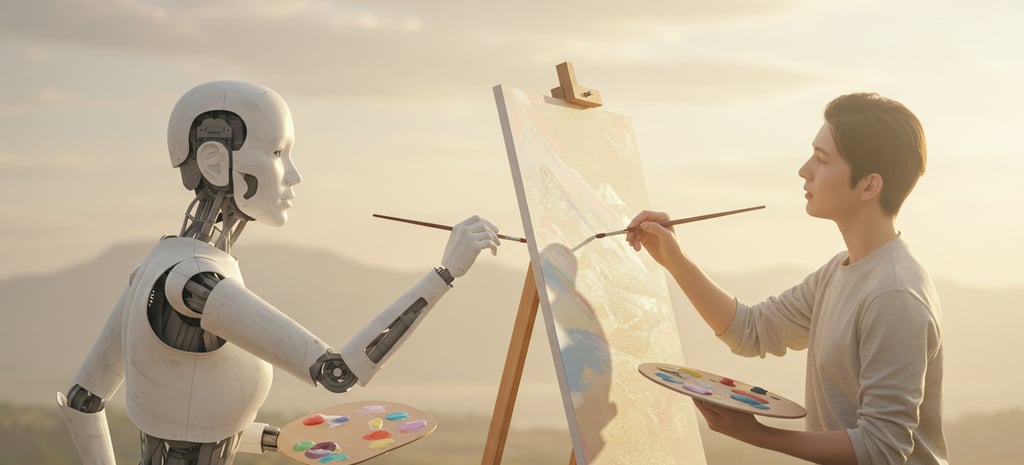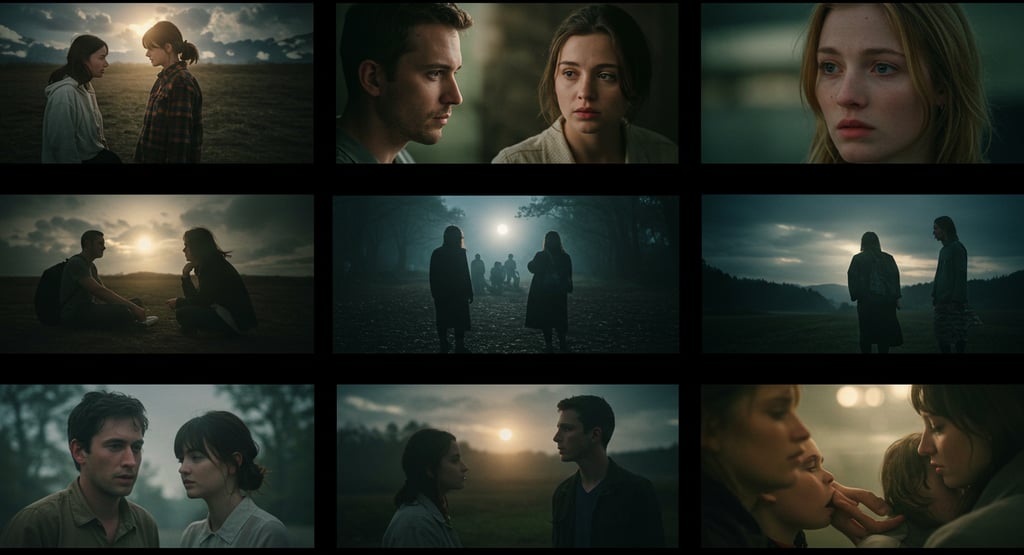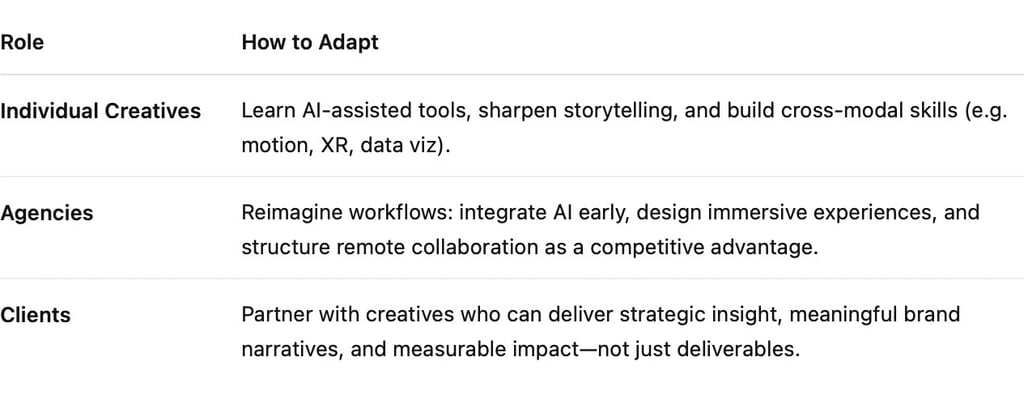The Future of Creative Work: Redefined
Explore the transformative era of creative work as AI co-creation, immersive technology, and global decentralized teams reshape the creative industry. Discover what the future holds for creativity.
AI IN USE
7/9/20252 min read


🤖 1. AI as Co‑Creator, Not Competitor
Generative AI, such as ChatGPT and image generators, is becoming an indispensable collaborator, handling repetitive tasks like ideation, script-drafting, or asset assembly. Instead of replacing humans, it acts like a calculator in a math class—freeing time for the emotional, storytelling work only humans can do.
Academic studies confirm this trend: creative professionals are now tasking AI with specific roles and then curating outputs to maintain tone, context, and accountability—what researchers call “interpretive templatized trust.” It’s a fine balance of delegation and human oversight.


🤝 2. AI as Ally, Not Adversary
Generative AI is accelerating automation in drafting copy, mock‑ups, concept ideation, and workflows. Yet scholars expect AI to augment human creativity, not replace it. Michelle Rigot from YAMA GROUP compares it to a math‑class calculator: “AI takes the busy work off our plates so we can focus on what only humans do best: tap into emotion… tell impactful stories”
🌐 3. Immersive, Multi-Sensory Experiences
Extended Reality (AR/XR/VR) is unlocking new frontiers for brand storytelling. Designers will craft more immersive, interactive narratives that bridge physical and virtual realms, catalyzing deeper audience connection.
🌍 4. Creativity in a Decentralized, Borderless World
Global and remote-first creative teams will define agency operations. This evolution demands leaders to navigate cultural nuances, language barriers, and timezone differences—but also unlock access to diverse perspectives and 24/7 ideation cycles.
🔄 5. Skill Shifts: Flexibility, Resilience & Collaboration
Visuals underscore essential future skills: complex problem-solving, adaptability, negotiation, and emotional intelligence. While technical know-how remains key, human-centered capabilities will set top creatives apart.
🛠️ 6. AI Integration in the Toolbox
Academic reviews show AI is reshaping every creative stage—from ideation and enhancement to post-production. However, successful integration relies on active human oversight, ensuring meaning, ethics, and originality.
🧠 1. From Pixel-Pushing to Purposeful Influence
There's a highlight that shifts away from routine design tasks—often labeled “pixel-pushing”—toward strategic roles: taste-makers and cultural curators shaping brand identity and consumer behavior. Designers will become storytellers, trend interpreters, and guardians of authenticity.


🔮 Final Thoughts
The next five years promise nothing short of a renaissance in creative work. AI and XR will empower humans to focus on nuance, empathy, context, and culture. Remote yet culturally rich teams will redefine global creative norms. At the center remains one constant: human storytelling.
As you plan, ask yourself: am I standing for emotion, culture, and storytelling—the elements that no AI or algorithm can replicate? If so, you’re well on your way to defining the creative roles of tomorrow.




